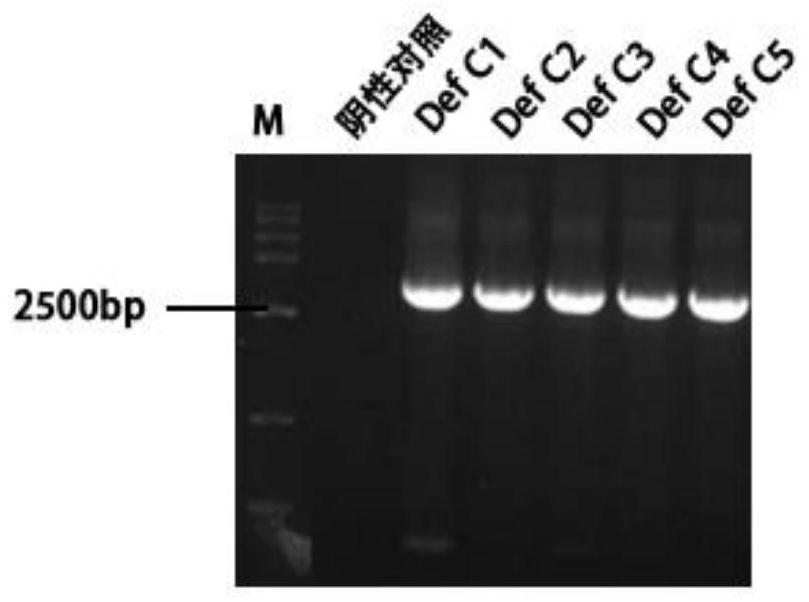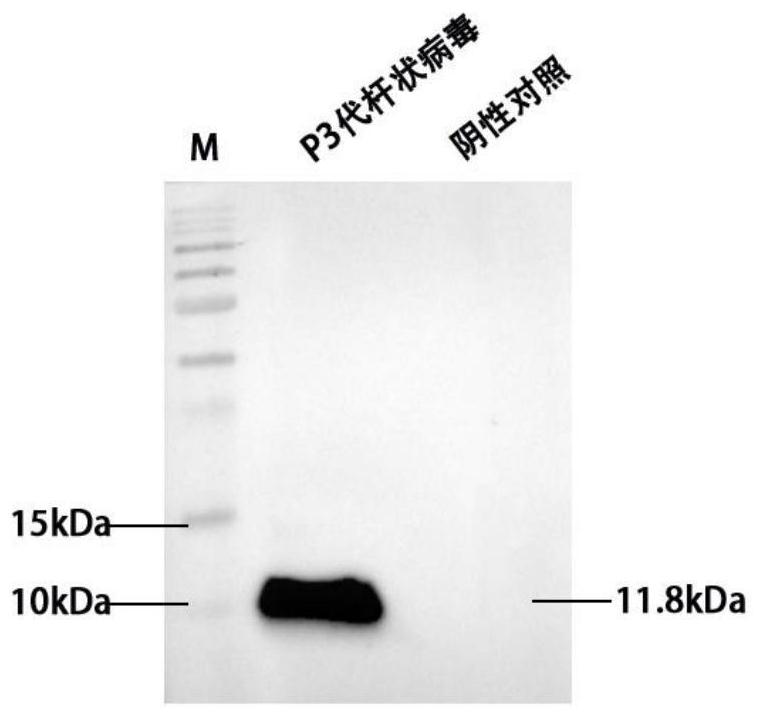Application of Def C protein in resisting dengue virus and expression method of Def C protein
An expression method and technology of dengue virus, which can be used in antiviral agents, peptide preparation methods, double-stranded DNA viruses, etc., can solve problems such as lethality, and achieve significant application value and guiding significance.
- Summary
- Abstract
- Description
- Claims
- Application Information
AI Technical Summary
Problems solved by technology
Method used
Image
Examples
Embodiment 1
[0044] The Aedes albopictus defensin family includes Def A, Def C and Def D, which have a wide range of antibacterial activities. The inventors have confirmed through experiments that Def C can be used as an important anti-dengue virus factor in Aedes albopictus.
[0045] This embodiment provides a method for obtaining the target recombinant Def C protein.
[0046] S1: Construction of recombinant protein vector;
[0047] Use Trizol (Invitrogen) to extract total RNA and synthesize cDNA from the midgut of Aedes albopictus, and then use the RNA extracted from the mosquito midgut as a template to perform reverse transcription; then according to the latest predicted Aedes albopictus Def C gene sequence in GenBank, A pair of full-length primers containing restriction restriction sites were designed using primer5.0 software. Wherein, the upstream primer sequence adopted is the nucleotide sequence shown in SEQ ID NO: 1, and the downstream primer sequence is the nucleotide sequence s...
Embodiment 2
[0065] In this example, on the basis of Example 1, the experiment is continued to confirm the toxicity of the recombinant Def C protein, and to verify that the recombinant Def C protein has the function of resisting dengue virus.
[0066] First, CCK-8 was used to detect the toxic effect of Aedes albopictus recombinant Def C protein on C6 / 36 cells and Vero cells, and the results are shown in the appendix Figure 4 shown. in, Figure 4 -a is the toxicity test result of recombinant Def C protein to C6 / 36 cells, Figure 4 -b is the toxicity test result of recombinant Def C protein to Vero cells.
[0067] Such as Figure 4 As shown, the Aedes albopictus Def C recombinant protein was diluted to 6 concentrations from 200 μg / mL, the recombinant DefC protein concentration varied from 0 μg / mL to 200 μg / mL (maximum concentration range), and the OD450 of each group of cells The values were all similar, and the recombinant Def C protein was not toxic to C6 / 36 cells and Vero cells, an...
Embodiment 3
[0079] This example discloses the use of a polypeptide containing the Def C functional domain in the preparation of anti-dengue virus drugs. The amino acid sequence of the polypeptide is shown in SEQ ID NO:4.
[0080] In other preferred embodiments, the amino acid sequence shown in SEQ ID NO: 4 is substituted, deleted and / or increased by one or more amino acids and has the same function. It can be used to prepare anti-dengue virus drugs.
[0081]Based on the amino acid sequence of SEQ ID NO:4, synthesize the target peptide protein powder, fully dissolve it with 1mL LPBS and filter it with a 0.22μm filter to sterilize, aliquot and dilute a part to the working concentration for later use.
[0082] Next, the function of the polypeptide was tested.
[0083] First, CCK-8 was used to detect the toxic effect of the polypeptide on C6 / 36 cells and Vero cells, and the results are shown in the attached Figure 11 shown. in, Figure 11 -a is the result of the toxicity test of the poly...
PUM
 Login to View More
Login to View More Abstract
Description
Claims
Application Information
 Login to View More
Login to View More - R&D
- Intellectual Property
- Life Sciences
- Materials
- Tech Scout
- Unparalleled Data Quality
- Higher Quality Content
- 60% Fewer Hallucinations
Browse by: Latest US Patents, China's latest patents, Technical Efficacy Thesaurus, Application Domain, Technology Topic, Popular Technical Reports.
© 2025 PatSnap. All rights reserved.Legal|Privacy policy|Modern Slavery Act Transparency Statement|Sitemap|About US| Contact US: help@patsnap.com



